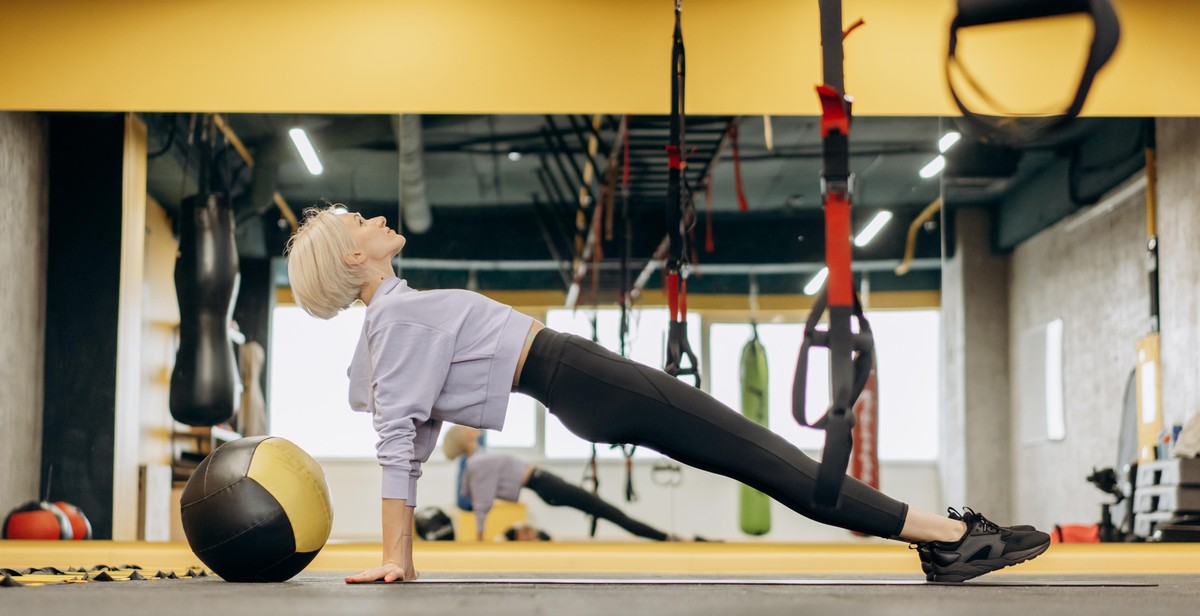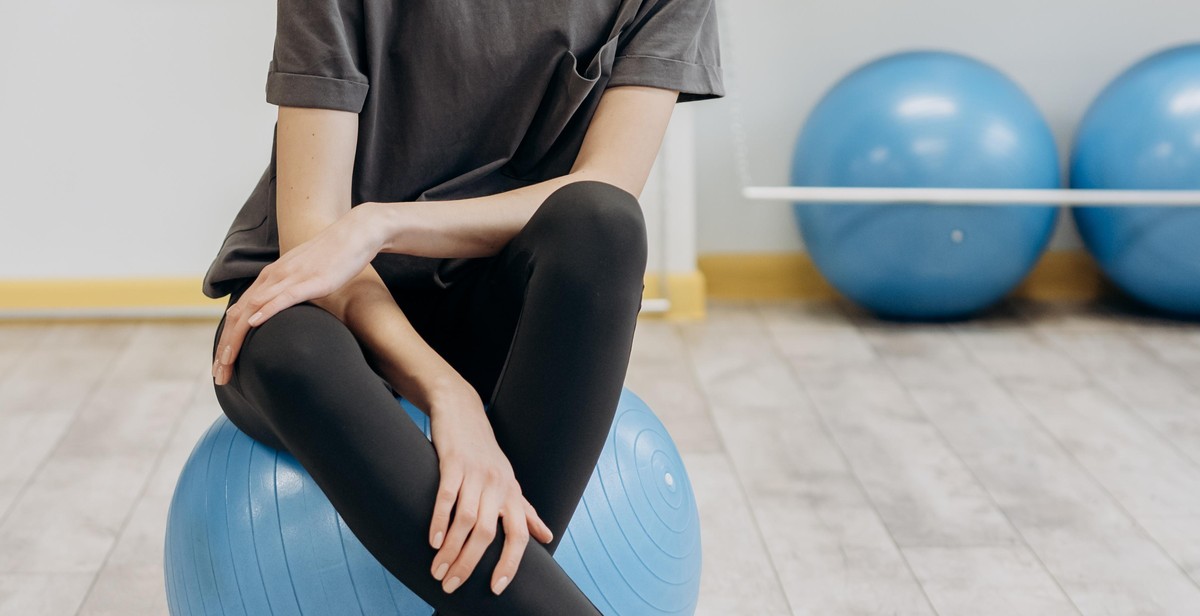Introduction: How to Improve Core Stability with Swiss Ball Exercises
Core stability is a crucial aspect of fitness that is often overlooked. It involves the strength and endurance of the muscles that make up the trunk of the body, including the abdominals, lower back, and hips. Having a strong core can improve posture, balance, and overall physical performance. One effective way to improve core stability is through Swiss ball exercises.
The Swiss ball, also known as an exercise ball, stability ball, or yoga ball, is a versatile piece of equipment that can be used for a variety of exercises. It can challenge the core muscles in ways that traditional exercises cannot, by engaging more muscles and requiring greater balance and control.
What is Core Stability?
Core stability is the ability of the muscles in the trunk of the body to maintain a stable position during movement. It involves the interaction of different muscle groups, including the abdominals, lower back, and hips. These muscles work together to stabilize the spine and pelvis, which is essential for proper movement and posture.
Weak core muscles can lead to poor posture, lower back pain, and decreased athletic performance. By improving core stability through Swiss ball exercises, individuals can enhance their overall fitness and prevent injuries.

Benefits of Swiss Ball Exercises for Core Stability
Swiss ball exercises are a great way to improve core stability and overall fitness. The Swiss ball, also known as a stability ball, is a versatile piece of equipment that can be used to target various muscle groups, including the core. Here are some of the benefits of incorporating Swiss ball exercises into your workout routine:
Improved Balance and Coordination
Swiss ball exercises require you to engage your core muscles to maintain balance and stability. This helps to improve your overall balance and coordination, which can translate to better performance in sports and other physical activities. By strengthening your core, you’ll also be able to maintain better posture, which can help to reduce the risk of back pain and other injuries.
Reduced Risk of Injury
Swiss ball exercises can help to reduce the risk of injury by strengthening the muscles that support your spine and other joints. By improving your core stability, you’ll also be able to maintain proper form during exercises, which can help to prevent injury. Additionally, Swiss ball exercises can be low-impact, making them a great option for individuals with joint pain or other limitations.
Increased Strength and Endurance
Swiss ball exercises can help to increase strength and endurance in your core and other muscle groups. By using the Swiss ball to perform exercises such as planks, crunches, and push-ups, you’ll be engaging multiple muscle groups at once, which can lead to greater overall strength. Additionally, the instability of the Swiss ball requires your muscles to work harder to maintain balance, which can help to improve endurance over time.
| Benefit | Description |
|---|---|
| Improved Balance and Coordination | Swiss ball exercises require core engagement, leading to better balance and coordination. |
| Reduced Risk of Injury | Swiss ball exercises strengthen muscles that support the spine and joints, reducing the risk of injury. |
| Increased Strength and Endurance | Swiss ball exercises engage multiple muscle groups, leading to greater overall strength and improved endurance. |

Swiss Ball Exercises for Core Stability
Swiss ball exercises are a great way to improve core stability. They engage the muscles of the core, including the abs, obliques, and lower back, while also working the stabilizer muscles that support the spine and pelvis. Here are some effective Swiss ball exercises for core stability:
Plank on the Ball
The plank on the ball is a challenging exercise that works the entire core, as well as the shoulders and arms. To perform this exercise, place your forearms on the ball and extend your legs out behind you, keeping your body in a straight line. Hold the position for 30 seconds to 1 minute, then rest and repeat for 3 sets.
Ball Pike
The ball pike targets the abs and hip flexors, as well as the shoulders and chest. Start in a plank position with your feet on the ball. Use your abs to lift your hips up towards the ceiling, rolling the ball towards your hands. Pause at the top, then lower back down to the starting position. Repeat for 10-12 reps for 3 sets.
Ball Pass
The ball pass is a great exercise for targeting the abs and obliques. Lie on your back with your legs straight and hold the ball between your hands. Lift your legs and upper body off the ground, passing the ball from your hands to your feet. Lower back down and repeat, passing the ball back to your hands. Aim for 10-12 reps for 3 sets.
Russian Twist
The Russian twist is a classic exercise for working the obliques. Sit on the ball with your feet flat on the ground and your knees bent. Hold the ball in front of you and twist your torso to the left, then to the right. Aim for 10-12 reps for 3 sets.
Back Extension
The back extension targets the muscles of the lower back, which are important for maintaining good posture and spinal health. Lie on the ball with your stomach on top and your feet against a wall for stability. Place your hands behind your head and lift your upper body off the ball, squeezing your lower back muscles. Lower back down and repeat for 10-12 reps for 3 sets.
Adding these Swiss ball exercises to your workout routine can help you improve your core stability and overall fitness. Try incorporating them into your next workout for a challenging and effective core workout.

Tips for Performing Swiss Ball Exercises Safely
Swiss ball exercises are a great way to improve core stability and balance. However, it is important to perform them safely to avoid injury. Here are some tips to help you perform Swiss ball exercises safely:
Choose the Right Ball Size
Choosing the right size of Swiss ball is important for your safety. The ball should be the appropriate size for your height. If the ball is too small, it will be unstable, and if it is too big, it will be difficult to control. To choose the right size, sit on the ball with your feet flat on the ground. Your knees should be at a 90-degree angle, and your thighs should be parallel to the ground.
Maintain Proper Form
Proper form is essential when performing Swiss ball exercises. Keep your feet flat on the ground and your core engaged at all times. Avoid arching your back or rounding your shoulders. Keep your spine in a neutral position, and make sure your head is in line with your spine.
Start Slow and Gradually Increase Intensity
Swiss ball exercises can be challenging, so it is important to start slow and gradually increase the intensity. Begin with basic exercises and gradually progress to more advanced ones. If you feel any pain or discomfort, stop immediately and consult with a healthcare professional.
- Start with basic exercises such as sitting on the ball or doing pelvic tilts.
- As you become more comfortable, progress to more challenging exercises such as planks or push-ups on the ball.
- Always listen to your body and don’t push yourself too hard.
By following these tips, you can perform Swiss ball exercises safely and effectively. Remember to always consult with a healthcare professional before starting any new exercise program.

Incorporating Swiss Ball Exercises into Your Fitness Routine
If you want to improve your core stability, incorporating Swiss ball exercises into your fitness routine can be a great way to achieve your goals. Here is a breakdown of how to incorporate Swiss ball exercises into your routine:
Warm-Up
Before you start any exercise routine, it is important to warm up your muscles to prevent injury. A good warm-up can include light cardio, such as jogging or jumping rope, and dynamic stretching, such as leg swings and arm circles. Once you are warmed up, you can start incorporating Swiss ball exercises into your routine.
Strength Training
Swiss ball exercises can be incorporated into your strength training routine to help improve your core stability. Here are some exercises you can try:
- Ball Crunches: Lie on the ball with your feet flat on the ground and your hands behind your head. Slowly crunch upward, contracting your abs.
- Ball Plank: Place your forearms on the ball and extend your legs behind you. Hold for 30-60 seconds.
- Ball Bridge: Lie on your back with your feet on the ball. Lift your hips up towards the ceiling, squeezing your glutes and hamstrings.
These exercises can be challenging, so start with a few reps and work your way up. As you become stronger, you can increase the number of reps and sets.
Cool Down
After you complete your strength training routine, it is important to cool down your muscles to prevent injury. A good cool down can include static stretching, such as holding a hamstring stretch or quad stretch for 30-60 seconds. You can also use the Swiss ball for stretching, such as placing it under your back and rolling back and forth to massage your spine.
By incorporating Swiss ball exercises into your fitness routine, you can improve your core stability and overall strength. Remember to warm up before you start your routine and cool down after to prevent injury.

Conclusion
Improving core stability is crucial for anyone who wants to maintain a healthy and active lifestyle. Swiss ball exercises are a great way to work on your core strength and stability, and they can be done in the comfort of your own home.
By incorporating Swiss ball exercises into your workout routine, you can improve your balance, posture, and overall fitness level. It’s important to start with basic exercises and gradually work your way up to more advanced ones to avoid injury and ensure proper form.
Remember to engage your core muscles throughout each exercise, and don’t forget to breathe. Consistency is key when it comes to improving core stability, so aim to incorporate Swiss ball exercises into your routine at least 2-3 times per week.
As with any exercise program, it’s important to consult with your doctor before starting. If you experience any pain or discomfort during an exercise, stop immediately and seek medical attention if necessary.
Final Thoughts
Swiss ball exercises are a fun and effective way to improve your core stability and overall fitness. By taking the time to work on your core strength, you can improve your posture, balance, and athletic performance. So grab a Swiss ball and get started today!
